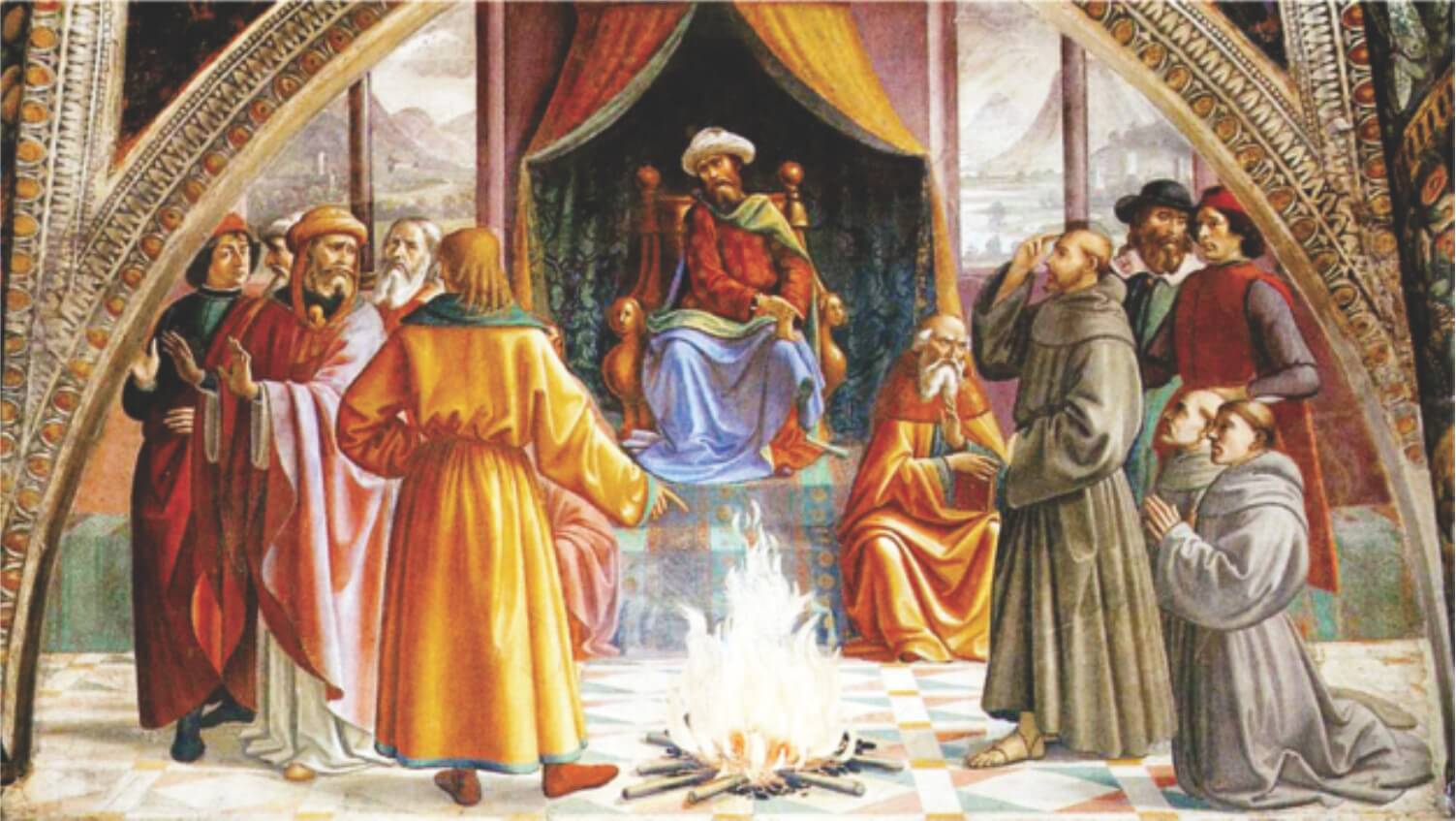An Historic Embrace of Friendship
Len Desroches, Toronto
Volume 37 Issue 10, 11 & 12 | Posted: January 4, 2023

When Francis of Assisi (1182-1226) was 20 years old he underwent a violent, year-long confinement as a prisoner of war. Prisons then were dungeons with little or no sunlight and where prisoners were sometimes chained to a wall and tortured. Imagine this kind of isolation for an entire year.
When Francis was released, he spent a long time recovering physically and psychologically. But he did not go back to what was normal. His conversion – his spiritual transformation – was beginning. It helped him discern what was life-giving and what was not life-giving in the normal world around him.
In a culture that feared and marginalized lepers, Francis confronted his own deep fear and one day physically embraced one of them. It was a foundational moment in his spiritual transformation: “When I was in sin [estranged from God] it seemed very bitter to me to see lepers. But it was God who led me among them…When I left them, that which seemed bitter to me was changed into sweetness of soul and body. Afterwards, I lingered a little, but it did not take me long to leave the world.”
Leave what world?
In a world where creation was normally taken for granted as only a resource to be used by humans, Francis lived a deep relationship with those he named Sister Water, Brother Sun, Sister Moon, Brother Wind…
Then there was the entirely normal world where the church had become a “Holy Empire” that killed enemies in “Holy Wars.” Francis’ spiritual transformation matured to a point where he risked his life during a horrific battle between Christians and Muslims, and went to meet the Sultan, Malik al Kamil. It became a historic embrace of friendship; a story that still instructs.
This took place during the Fifth Crusade. The first four had failed miserably. This time, Pope Innocent III – undoubtedly the most politically powerful pope that ever lived – writes a major encyclical, Quia Maior, in 1213. He sends it to nearly all of the ecclesiastical provinces of Europe basically ordering them to join him in a new crusade. This crusade will be under the more direct control of the Vatican: the military commander is Cardinal Pelagius Galvani.
The goal of the crusade is to regain control of Jerusalem, but only after taking Damietta, a strategic Muslim city in Egypt on the River Nile. The sultan of Egypt, Malik al Kamil, attempts to defend this walled city. Christians and Muslims face each other across the Nile. Thousands are killed on both sides. After a long siege of over a year by the Christians, terrible disease and horrific famine start to take effect inside the walled city of Damietta.
Sultan Malik al Kamil offers peace talks and generous conditions. The papal military delegate, Cardinal Pelagius Galvani rejects all the offers.
On November 5, 1219, Damietta falls at the hands of the Christian warriors. Of the 80,000 children, youth, men and women living in the city, roughly 3,000 survive the military onslaught and the diseases and starvation!
It is in the midst of this war that Francis takes Friar Illuminato with him and crosses the enemy line to meet the Sultan. Though the Sultan is advised to kill the two Christian “monks,” he is deeply stirred by their presence. They remind him of the Muslim Sufis who also live a life of simplicity and radical spiritual wisdom.
We know that for days deep spiritual explorations took place between Francis and Malik al Kamil. We know this not only from Christian accounts, but also from the Muslim chronicler, Al Zajjat, who refers to “the affair of the famous monk” and how the Sultan consulted his theological adviser, the highly respected mystic Fakr-al-Din.
When came the time of Francis’ departure, the Sultan said, “Pray for me.” It is clear that both Francis and Malik al Kamil had been profoundly changed. God’s living Spirit had shaken their assumptions of each other. They left as friends, not as enemies.
The Sultan offered Francis many gifts, but Francis only accepted an ivory horn used to make the Muslim call for prayer. Francis used it on his return to Italy to call people to hear him preach.
In the summer of 1224, the call for another crusade goes out across the land. Francis is struck with grief and goes on a solitary retreat of fasting and prayer. When Francis emerges from this time of solitude, he writes on parchment a prayer that resembles the Muslim meditation on the 99 Most Beautiful Names of God. Francis was apparently inspired by the prayers he heard while in the Muslim camp.
On the same parchment, Francis draws the head of a man at the bottom. The face Francis draws represents none other than Sultan Malik al Kamil. It is a heartfelt prayer for God to protect Sultan al-Kamil and to bring peace.
When the Sultan’s spiritual advisor and mystic, Fakr-al-Din dies, these words are inscribed on his tomb, “I met the Christian monk and it changed my life.”
Len Desroches leads peace making retreats.
Len Desroches, Toronto

